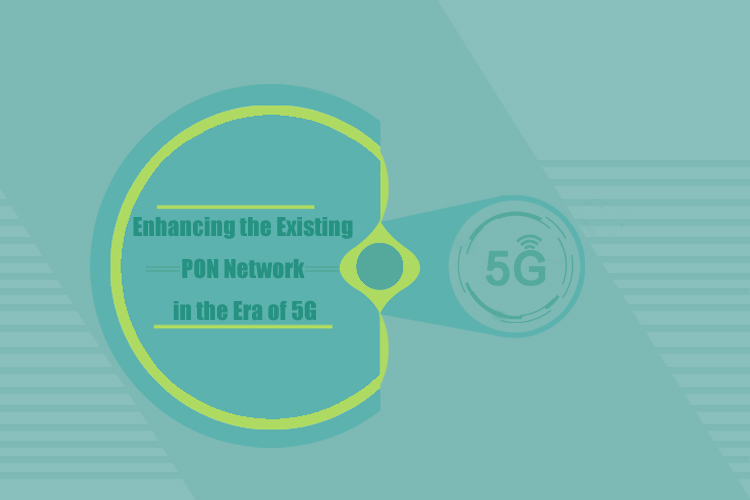Enhancing the Existing PON Network in the Era of 5G
Introduction
The rapid evolution of technology has led to the emergence of 5G, which promises to revolutionize the way we connect and communicate. To fully leverage the potential of 5G, it is crucial to upgrade the existing Passive Optical Network (PON) infrastructure. In this article, we will explore four key strategies to enhance the existing PON network for the 5G era.

Upgrade to the ng-PON2 Standard:
The first step in improving the existing PON network is upgrading it to the next-generation PON 2 (ng-PON2) standard. This upgrade allows for a substantial increase in upstream and downstream speeds, supporting Gbps-level requirements. By enabling 10Gbps transmission capacity, ng-PON2 ensures that the network can handle the ever-growing demand for high-speed data transfer.
Interconnecting Multiple PON Technologies:
To further enhance network capacity, it is essential to interconnect multiple PON technologies. This can be achieved by combining Time Division Multiple Access (TDMA), Wavelength Division Multiplexing (WDM), and other wave division technologies. Such integration enables efficient utilization of the available bandwidth, allowing for increased data transmission rates and improved network performance.
Introducing Customized Optical Modules:
Enhancing the interaction between the Physical (PHY) layer and the Media Access Control (MAC) layer can significantly improve the overall performance of the PON network. By incorporating customized optical modules, it becomes possible to optimize the network's efficiency and reduce latency. These modules can be designed to suit specific network requirements, ensuring seamless communication between the different layers.
Utilizing Software-Defined Networking (SDN) and Network Function Virtualization (NFV):
Software-based technologies like SDN and NFV offer immense potential for restructuring the PON network architecture. SDN allows for centralized control and management of network resources, enabling better flexibility and scalability. NFV, on the other hand, enables the virtualization of network functions, reducing hardware costs and increasing network efficiency. By leveraging these technologies, service providers can adapt to changing demands and optimize network performance.
Conclusion
As 5G becomes the new norm, upgrading the existing PON network is crucial to meet the increasing demand for high-speed and reliable connectivity. By upgrading to the ng-PON2 standard, interconnecting multiple PON technologies, introducing customized optical modules, and utilizing software-based technologies, service providers can improve network capacity, efficiency, and scalability. These enhancements pave the way for a seamless transition into the era of 5G and ensure a superior user experience.
FAQs:
Q1. What are the benefits of upgrading to the ng-PON2 standard?
A1. Upgrading to ng-PON2 supports 10Gbps upstream and downstream speeds, meeting the Gbps-level requirements. This ensures a significant increase in data transfer rates and enhances the overall network performance.
Q2. How does interconnecting multiple PON technologies improve network capacity?
A2. By combining TDMA, WDM, and other wave division technologies, network capacity can be increased by efficiently utilizing available bandwidth. This allows for higher data transmission rates and improved network performance.
Q3. What role do customized optical modules play in improving the PON network?
A3. Customized optical modules optimize the interaction between the PHY layer and the MAC layer, improving network efficiency and reducing latency. They can be tailored to meet specific network requirements, ensuring seamless communication between network layers.
Q4. How do SDN and NFV contribute to restructuring the PON network structure?
A4. SDN enables centralized control and management of network resources, enhancing flexibility and scalability. NFV virtualizes network functions, reducing hardware costs and increasing network efficiency. Together, these technologies provide a more agile and adaptable network structure.
Q5. How do these enhancements benefit end-users?
A5. The improvements in the PON network result in faster data transfer rates, increased network capacity, and improved overall performance. End-users can enjoy seamless connectivity, enhanced user experiences, and the ability to leverage the full potential of 5G technology.
Keywords: PON network, 5G, ng-PON2, upgrade, network capacity, TDMA, WDM, customized optical modules, PHY layer, MAC layer, SDN, NFV, software-based technologies, scalability. 
 The Future of Fiber Optic Communication Network Architecture: Evolution and the Role of SDON Technology
The Future of Fiber Optic Communication Network Architecture: Evolution and the Role of SDON Technology
 What opportunities and challenges does free-space optical communication technology face?
What opportunities and challenges does free-space optical communication technology face?
 Opelink MPO Products for High-Speed Data Center Applications
Opelink MPO Products for High-Speed Data Center Applications
 CWDM vs. DWDM: Which Optical Transmission Technology Should You Choose?
CWDM vs. DWDM: Which Optical Transmission Technology Should You Choose?